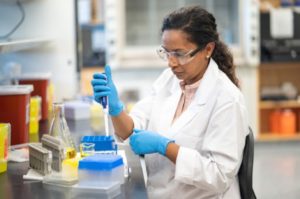As researchers eagerly begin to return to the lab, safety should be a key consideration. One researcher, who had been away from the Lab for three months, spent several hours doing tube handling and pipetting their first day back in a lab. The next day the researcher repeated similar lab work.
On the third day, a non-lab day, the researcher was working at home and experienced discomfort in their dominant hand and wrist. Hands and wrists have muscle memory and three months of not working in a lab meant that the muscles had been ‘deconditioned’ for repetitive work. The researcher paused the situation to discuss it with their supervisor and the supervisor contacted the EHS Ergonomics Team for assistance.
An action plan was developed from the discussion which included reducing the amount of time performing lab work each day by changing the number of samples the researcher handled, developed work planning to match what can be accomplished in the two days in the lab available to the researcher, and determined natural breaks in the protocols to allow the researcher to step away from the tasks without negatively impacting the experiment. These changes had only a minor impact on the productivity of the research, but that trade-off ensured that the work could be performed safely.
The researcher wanted to share their experience with others to send the message to be mindful to ease back into lab work, especially when experiments involve repetitive motions. This story has a happy ending; the researcher has not experienced any further discomfort and more science work has progressed.


